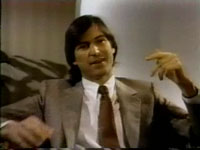
This list of primary documents included in Release 1.0 of "Making the Macintosh" is organized according to subject. You can also view a list sorted by author.
Stewart Brand, Stewart Brand's List of Layout Tools. A list of the tools Whole Earth Catalog editors used to lay out their catalog. It illustrates the level of technological sophistication needed to put together a magazine in the late 1960s.
Raines Cohen, Stephen Howard, The State of the User Group. "We're still trying to figure out exactly what BMUG's Philosophy is, and whether there is such a creature. We know this much: it has its roots in The Hacker Ethic and Berkeley Radicalism, as well as in the jaded cries of computer users we represent." Published in BMUG Newsletter (Fall/Winter 1987), 15.
Reese Jones, BMUG After One Year. Co-founder Reese Jones' reflections on the state of BMUG after one year. "Th[e] excessive demand for the types of services BMUG provides suggests various things about the computer industry and computer education at the University level. There is a tremendous need for a source of objective and realistic advice to the user and to the potential computer user.... We try to provide through BMUG the information that we wanted to find out for ourselves, but couldn't, without help." Published in BMUG Newsletter (Fall 1985).
Scot Kamins, Introduction [to SF Apple Core]. Scot Kamins describes founding SF Apple Core. Published in Ken Silverman, ed., The Best of Cider Press 1978-1979 (San Francisco Apple Core, 1979).
Theodore Roszak, From Satori to Silicon Valley. An electronic version of Theodore Roszak's From Satori to Silicon Valley, based on his Alvin Fine Memorial Lecture, presented at San Francisco State University in 1985, and first published later that year. The book explores the relationship between the counterculture's views of technology, the development of personal computing and the Internet, and the rise of Silicon Valley's distinctive local culture. The electronic version includes illustrations, some of which were used in the Fine and other lectures presented by Dr. Roszak, and is broken into several pages for easier reading online.
Theodore Roszak, The Times They Keep A-Changin'. Introduction to From Satori to Silicon Valley.
Theodore Roszak, The Gathering of the Tribes. Section 2 of From Satori to Silicon Valley.
Theodore Roszak, Organic Commonwealth and Buddhist Anarchy. Section 3 of From Satori to Silicon Valley.
Theodore Roszak, A Taste for Industrial Light and Magic. Section 4 of From Satori to Silicon Valley.
Theodore Roszak, Reversionaries and Technophiles. Section 5 of From Satori to Silicon Valley.
Theodore Roszak, Machines of Loving Grace. Section 6 of From Satori to Silicon Valley.
Theodore Roszak, The Short Cut to Satori. Section 7 of From Satori to Silicon Valley.
Theodore Roszak, The Light That Failed?. Section 8 of From Satori to Silicon Valley.
Theodore Roszak, A Vision Both Bright and Dark. Section 9 of From Satori to Silicon Valley.
Theodore Roszak, Nerds, Zombies, and the Flight from Mortality. Section 10 of From Satori to Silicon Valley. This section was written by Dr. Roszak for the electronic version of this essay, and appears here for the first time.
Theodore Roszak, Down Among the Cyberpunks. Section 11 of From Satori to Silicon Valley. This section was written by Dr. Roszak for this electronic version of this essay, and appears here for the first time.
Ed Seidel, What a Users' Group Ought To Be. Describes the philosophy behind the founding of the Yale Macintosh Users Group. "The mission of our group... is to explore the possibilities of the Macintosh. This process can be frustrating or impossible for the single user, but as a group our efforts can be fruitful and enjoyable. As a group we can potentially provide great benefit to everyone involved, but the key word is involved. We need to be more than just a source of public domain software (although we are that!); by getting together we can explore the Macintosh together." Published in The DeskTop Journal 3 (Winter 1984), 3.
Jef Raskin, The Book of Macintosh. Collection of documents relating to the early design of the Macintosh. The documents include Raskin's thoughts on the Macintosh's features, cost, design, and use; memos from others suggesting additional features, software, etc..
Jef Raskin, Design Considerations for an Anthropophilic Computer. "This is an outline for a computer designed for the Person In The Street (or, to abbreviate: the PITS); one that will be truly pleasant to use, that will require the user to do nothing that will threaten his or her perverse delight in being able to say: "I don't know the first thing about computers," and one which will be profitable to sell, service and provide software for...." Part of The Book of Macintosh, compiled by Raskin.
Jef Raskin, General Criteria. Outlines the criteria guiding the design of the Macintosh. "The most important goal... is for this computer to have a selling price of $500 or below.... Macintosh is designed to be much easier to use than existing computers, and it must be provided with a range of pre-programmed applications that the average person will find alluring." Part of The Book of Macintosh, compiled by Raskin.
Jef Raskin, The Apple Computer Network. Proposes an Apple Computer Network to allow users of personal computers to access databases, send e-mail, etc.. Some of its suggestions are remarkably prescient, and call to mind the World Wide Web. Argues that the future of the company could be more in developing these services than in computer manufacture, and that if this plan were carried out, "Apple will be seen, in the future, not so much as a builder of hardware, but as the purveyor of a service that interpenetrates the telephone network, and provides information." Part of The Book of Macintosh, compiled by Raskin.
Jef Raskin, January 1980 Overall Summary of the Macintosh System. Describes the state of the Macintosh project in 1980. Part of The Book of Macintosh, compiled by Raskin.
Jef Raskin, Important Points About Macintosh. Document was "prepared for the meeting on 12 October [1979]."Part of The Book of Macintosh, compiled by Raskin.
Jef Raskin, Reply to Jobs, and Personal Motivation. Raskin's response to comments by Steve Jobs about the features and cost of the Macintosh.Part of The Book of Macintosh, compiled by Raskin.
Jef Raskin, The Completely Distributed Communications Network. Explains what communications networks are, and why Apple should develop them along with the Macintosh.Part of The Book of Macintosh, compiled by Raskin.
Jef Raskin, Summary of October 10. "A few of the main points of the project as of October 10, prepared for a meeting with Whitney, Carlson, Jobs, Markkula, Holt, Scott Roybal and Raskin."Part of The Book of Macintosh, compiled by Raskin.
Jef Raskin, Computers by the Millions. Jef Raskin's article "Computers by the Millions," which examines the logistical challenges involved in mass-producing computers.
Jef Raskin, Circulation of "Computers for the Millions". Cover memo by Jef Raskin, circulating within Apple a draft of his essay "Computers by the Millions." The distribution list gives some sense of Raskin's intellectual circle within Apple.
Jef Raskin, Raskin Remembers "Computers by the Millions". E-mail by Jef Raskin, which includes a copy of "a memo from 1980 that refers to Computers by the Millions.... This memo, addressed to the late Tom Whitney, then head of engineering and to whom I reported, also gives a slice-of-life view of a young company." The document includes additional comments by Raskin.
Jef Raskin, Genesis and History of the Macintosh Project. An overview of the Macintosh project. Originally written on 16 February 1981, this version includes annotations by Raskin dated 5 November 1993. Raskin explains in an author's note, "This document was written in reaction to Steve Jobs having taken over managing hardware development on the Macintosh project."
Bill Dresselhaus, Lisa Mouse Package Design. Memo from Bill Dresselhaus to Lisa mouse designers, 30 May 1980, outlining the division of labor and responsibility for the package design of the Lisa mouse.
Dave Evans, Mouse Cable and Connector. Memo dated c. 20 January 1981, explaining the state of work on the connector cable for the Apple mouse.
Dave Evans, Mouse Report, December 1980. Mouse Project Team Report for December 1980 and January 1981, dated 2 February 1981.
Dave Evans, Mouse Connector. Memo dated 6 March 1981, describing recent agreements regarding the mouse connector.
Dave Evans, P3 Mouse Deliveries. Memo dated 17 March 1981, announcing the delivery of P3 mice. Includes a distribution list, and announcement of a meeting between Apple developers and mouse designers.
Dave Evans, Completion of 50 P3 Mice. Memo dated 23 March 1981, announcing the shipment of 50 P3 mice. Includes acknowledgement of the work of various members of the mouse development team at Apple and Hovey-Kelley.
Dave Evans, Mouse OEM Vendors (Whetstone). Memo dated 4 March 1982, describing presentation of a mouse designed by Whestone to Apple personnel.
Dean Hovey, Hovey-Kelley and the Mouse. Memo from Dean Hovey to Tom Whitney, 4 June 1980. "This memo's intent is to establish H/K's perception, to this date, of its involvement with Apple's Mouse development program." Explains how Hovey-Kelley became involved in the mouse project; why they decided to work on the project; and what they hope to get out of it.
Dean Hovey, Hovey-Kelley Mouse Billing. Memo from Dean Hovey to Bill Lapson, 4 August 1980, outlining the phases of Hovey-Kelley's work on the mouse, and progress toward completion.
Bill Lapson, Mouse Parts. Memo dated 10 April 1981, regarding "materials, colors, and textures for the case and keybutton, logo, and centering of the keybutton. "
Bill Lapson, Apple Mouse Droppings. Memo by Bill Lapson, dated 4 August 1981, summarizing the state of work on the mouse. Includes a list of people involved in the project, and their responsibilities.
Bill Lapson, Lore of the Mouse. Retrospective essay written 8 July 1982, and distributed to members of the mouse development group. "The Mouse project has matured to the point where many others will be involved in its evolution. This collection of facts should ensure that some of the important lore about the Mouse is neither lost or distorted as time goes on."
Rickson Sun, Testing the Mouse. Memo from Rickson Sun to Bill Lapson, 16 October 1980, describing Hovey-Kelley's tests of the mouse.
Tom Whitney, Hovey/Kelley Work on Mouse. Memo from Tom White to Jerry Manock and Tom Hong, 14 May 1980, regarding Hovey-Kelley's continued involvement in the design of the Lisa mouse, and their interest in possibly manufacturing the mouse.
Jim Yurchenco, Choosing Molding Vendor. Letter from Jim Yurchenco to Bill Lapson, 5 December 1980, recommending "Micro Molding for producing the mouse ribcage and detector block tooling ." The tools would be used to manufacture the mice, so it was critical to work with a company that could do precise work.
David Casseres, Beyond Word Processing: The Online Text System. Memo by David Casseres arguing for the development of a text editing system like that created by Douglas Engelbart's ARC group in the 1960s. Part of The Book of Macintosh, compiled by Jef Raskin.
Apple Computer, Apple Publishing Press Release. "Apple Computer Announces Book Publishing Program and Exclusive Agreement with Addison-Wesley," press release dated 28 November 1984, describing "a book publishing program to improve the distribution of existing and future Apple manuals and to encourage the development of computer books and training materials." in conjunction with Addison-Wesley.
Apple Computer, Apple II Basic Manual Press Release. "Apple II BASIC Programming Manual, Informative and Entertaining Reading for Novice and Professional Alike," press release dated 8 June 1978, describing the publication of Jef Raskin's Apple II Basic Programming Manual.
Apple Computer, Photograph of Apple II Basic Manual. Photograph of Apple II Basic Programming Manual, issued with the 8 June 1978 press release announcing the release of the manual. The caption reads, "Apple II Basic Programming Manual is an easy-to-read, well-illustrated and entertaining manual for the Apple II computer. It guides the beginner and professional all the way from setting up the Apple II through to the writing of extensive Basic programs."
Chris Espinosa, Cover of Chris Espinosa's Apple II Reference Manual ("The Red Book"). Cover of Chris Espinosa's Apple II Reference Manual ("The Red Book"), with various marginal notes, annotations, and doodles. Espinosa's revision of the manual, under the direction of Jef Raskin, during his freshman year at U.C. Berkeley has become the stuff of Apple legend.
Apple Computer, Apple II Basic Manual Press Release. "Apple II BASIC Programming Manual, Informative and Entertaining Reading for Novice and Professional Alike," press release dated 8 June 1978, describing the publication of Jef Raskin's Apple II Basic Programming Manual.
Apple Computer, Apple Publishing Press Release. "Apple Computer Announces Book Publishing Program and Exclusive Agreement with Addison-Wesley," press release dated 28 November 1984, describing "a book publishing program to improve the distribution of existing and future Apple manuals and to encourage the development of computer books and training materials." in conjunction with Addison-Wesley.
Apple Computer, Software for Apple's Macintosh Computer. "Software for Apple's Macintosh Computer Abounds at National Computer Conference," press release dated 9 July 1985, describing software in development for the Macintosh.

Gartner Group News Feature 1, "Meeting the Challenge." Presents the Macintosh introduction as part of a high-risk, high-reward strategy by Apple to maintain its preeminence in the computer industry.
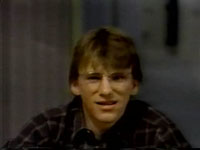
Gartner Group News Feature 2, "Creating a Computer." Profile of the Macintosh development team. Features quotes from software wizards Bill Atkinson and Andy Hertzfeld, technical documentation manager Chris Espinosa, and Apple co-founder Steve Jobs.

Gartner Group News Feature 3, "Getting Mac to Market." Inside the factory created to produce Macintosh computers.
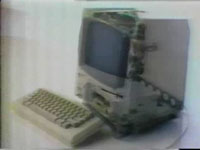
Gartner Group News Feature 4, "Targeting the Audience." Dissects the Macintosh advertising campaign, explaining the amount of work that goes into a large-scale marketing effort targeted at "knowledge workers."
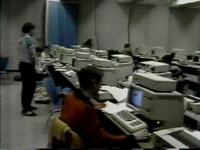
Gartner Group News Feature 5, "Winning the Educational Market." Focuses on the Apple University Consortium, and Apple's hopes that the Macintosh will catch on among students and faculty.
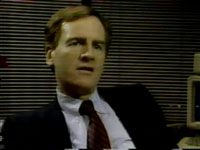
Gartner Group News Feature 6, "Press Release-- Macintosh." A general overview of the Macintosh computer and its introduction.
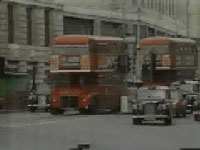
Gartner Group News Feature 7, "Macintosh International." Discusses plans for marketing the Macintosh overseas, especially in Europe.
Guy Kawasaki, Macintosh Insiders Ten Years Later. A look at the subsequent careers of the signers of the Macintosh, released as part of a 10-year celebratory press packet issued by the company. "Forty eight of the early employees of the Macintosh division signed the die for the inside of the Macintosh 128K. Who were these people? And what are they doing today?"
Barbara Krause, Inquiries from the Press. Memo to Apple managers from Barbara Krause, manager, corporate press relations, 4 March 1985. It warns against talking to the press without the assistance of Apple PR, to avoid "confusion and an erosion of Apple's credibility" or leaks about new products.
Barbara Krause, Media Guidelines. Memo to Apple managers from Barbara Krause, manager, corporate press relations, 9 April 1985. It warns about journalists' wiles, and explains how they may try to get proprietary information or distort statements.
Barbara Krause, Inquiries from the Press. Memo to Apple managers from Barbara Krause, manager, corporate press relations, 10 July 1985. It encourages employees to direct media calls to Apple's PR department, and warns against speaking with the press off the record.
Regis McKenna, Macintosh Product Introduction Plan. Plan dated 7 October 1983, covering strategic marketing effort, with a focus on the initial rollout and several months afterwards.
Regis McKenna, First Macintosh Press Release. "Apple Introduces Macintosh Advanced Personal Computer," the first press release describing the Macintosh, 24 January 1984.
Regis McKenna, Relationship Marketing and Apple. Extract from Regis McKenna's Relationship Marketing: Successful Strategies for the Age of the Customer (Reading, MA: Addison-Wesley Publishing, 1991), describing how McKenna and Apple developed the "knowledge worker" concept, and the key messages to use in communicating with journalists and other industry influencers.
Jean Richardson (Apple Computer) and Rene White (Regis McKenna), "Apple Computer." Profile of Apple Computer, given to journalists as background.
Anonymous, MacWorld Expo. Describes the 1985 MacWorld expo. Published in EBMUG Newsletter (February 1985), 2-3.
Bernard Aboba, Once More, With Feeling: The State of User Groups Today. Surveys the current state of user groups. " Things in the Macintosh World have changed a great deal since the beginning, and... User Groups must therefore change as well.... What is needed, it seems to me, is a State of the MUGdom address. Till that arrives, let's hope this article is a proper substitute." Originally published in BMUG Newsletter 4:2 (Summer/Fall 1988), 35-38.
Ray Badowski, The Plan of St. Gall. Uses a quirky citation in Doug Clapp's Macintosh! COMPLETE to the medieval Plan of St. Gall as a jumping-off point to argue for a certain humanistic perspective behind the design of the Macintosh. "I would expect praise for something like this type of literary effort to come from an early Macintosh zealot. Could there be a correlation between "Macintosh people"... and the ability to appreciate the arts and humanities? We've all read the stories of the sneakers, the T-shirts, and the avant garde atmosphere surrounding the Mac's development. Very atypical, and unprofessional in some people's eyes. Yet, in order for something as well thought out as the Macintosh user interface to have been developed, there had to have been some very human things, some very artistic things going on." Published in The DeskTop Journal 10 (Winter 1986), 2.
Raines Cohen, Stephen Howard, The State of the User Group. "We're still trying to figure out exactly what BMUG's Philosophy is, and whether there is such a creature. We know this much: it has its roots in The Hacker Ethic and Berkeley Radicalism, as well as in the jaded cries of computer users we represent." Published in BMUG Newsletter (Fall/Winter 1987), 15.
Paul Danish, A Tribute to Apple's STAR Marketing. Comparison of the Xerox Star, Lisa, and Macintosh, prompted by a display of the three at the 1984 Rocky Mountain Computer Fair. After discussing the cost and features of each, the article concludes with a critique of Xerox's marketing strategy that highlights the belief that the Macintosh is an egalitarian, people's computer: "What outrages me is that Xerox took a technology that was so manifestly designed to make the computer accessible and-- whether out of short-sightedness or out of greed-- marketed it in a way all but guaranteed to make it shrivel and wither." Published in Club Mac News (November 1984), 49-51.
Paul Danish, The LaserWriter: Stop the Presses, A Revolution is About to Explode!. On the revolutionary potential of the LaserWriter and desktop publishing: "The... typographic and illustrative tools that publishers have literally used to start wars and topple governments will now be available to anyone with a Macintosh and a laser printer." Published in Club Mac News (March 1985), 27-28.
Stephen Howard, An Introduction to BMUG. Describes the Berkeley Macintosh User Group (BMUG) and its activities. Originally published in BMUG Newsletter 4:2 (Summer/Fall 1988), 3-5.
Stephen Howard, The Cult of the Mac and the New. A quirky, occasionally rhapsodic piece describing the cult of the Macintosh, this essay is illuminating as an example of the kinds of flights of fancy and imagination the Macintosh inspired in its most devoted early users. Warns that "Just for fun, imagine that this piece of hallucinogenic prose was written by a rhetoric major on caffeine during finals." Originally published in BMUG Newsletter 4:2 (Summer/Fall 1988), 248-250.
Reese Jones, BMUG After One Year. Co-founder Reese Jones' reflections on the state of BMUG after one year. "Th[e] excessive demand for the types of services BMUG provides suggests various things about the computer industry and computer education at the University level. There is a tremendous need for a source of objective and realistic advice to the user and to the potential computer user.... We try to provide through BMUG the information that we wanted to find out for ourselves, but couldn't, without help." Published in BMUG Newsletter (Fall 1985).
Ted Jones, The Ultimate BMUG Thursday Night... and You Are There. This excellent exercise in "virtual witnessing" is an account of a semi-typical BMUG meeting. It includes a description of the proceedings of meetings, the contributions of core members Reese Jones, Raines Cohen, and Linda Custer, and the group's reactions to product demos. It also includes a hilarious account of an IBM fan doing a take-off of the famous "1984" commercial. Originally published in BMUG Newsletter 4:2 (Summer/Fall 1988), 248-250.
Scot Kamins, Introduction[to SF Apple Core]. Scot Kamins describes founding SF Apple Core. Published in Ken Silverman, ed., The Best of Cider Press 1978-1979 (San Francisco Apple Core, 1979).
Louise Kohl, The Bottom Line. Charts the development of the Macintosh as a business machine, and the implications of its entry into corporate America for Apple's relations with hobbyists and independent programmers. Argues that "Apple has made one consistent mistake all along the way; and continuing to make it could jeopardize even their present success. Apple has always ignored the valuable contributions made by early and-- dare I say it?-- non-corporate users. This seems to me to be a very dangerous procedure." Originally published in BMUG Newsletter 4:2 (Summer/Fall 1988), 287-288.
Norm Mayell, Notes on the Printed Letter and its Graphic Embellishment. Surveys the state of Macintosh printing, and the potential impact of laser printing. "When you think about computer power, typesetting has been a key point of extensive technology. " Published in EBMUG Newsletter 7 (June 1985), 3-4.
Ed Seidel, What a Users' Group Ought To Be. Describes the philosophy behind the founding of the Yale Macintosh Users Group. "The mission of our group... is to explore the possibilities of the Macintosh. This process can be frustrating or impossible for the single user, but as a group our efforts can be fruitful and enjoyable. As a group we can potentially provide great benefit to everyone involved, but the key word is involved. We need to be more than just a source of public domain software (although we are that!); by getting together we can explore the Macintosh together." Published in The DeskTop Journal 3 (Winter 1984), 3.
Terry Tufts, Don Scellato, Comment Without Quote. An exchange over the issue of whether the Macintosh is an open or closed machine. Published as Terry Tufts, "Comment Without Quote" Cider Press (July 1985), 14; Don Scellato, "Open and Closed (A Response to Comment without Quote)," Cider Press (July 1985), 5.
Unknown, Guy Kawasaki and SMUG. An account of Guy Kawasaki's 1986 visit to the Stanford Macintosh User Group, one of many visits by Apple developers and officials to Bay Area user groups. Originally published in Jay Michlin, "Last Meeting," SMUG Newsletter (August 1986), p. 4-5 (M1007, Apple Computer Inc. Papers, Series 12, Box 44, Folder 12).
Unknown, User Groups and Piracy. A letter from John Agosta, then chair of the Stanford Macintosh User Group, to A+ magazine disputing their claim that SMUG engaged in software piracy. User groups tended to take strong positions against copyright infringement and software piracy, in part because they were such important distributors of freeware and shareware. Originally published in SMUG Newsletter (March 1985), 2 (M1007, Apple Computer Inc. Papers, Series 12, Box 44, Folder 10).
Unknown, LaserWriter Users' Notes. An article on the new LaserWriter laser printer. Originally published in SMUG Newsletter, 2:3 (August 1985), p. 3 (M1007, Apple Computer Inc. Papers, Series 12, Box 44, Folder 10.).
C. J. Weigand, An Exclusive Interview with Mitch Hall. Interview with Mitch Hall, organizer of the MacWorld Expo. Published in The DeskTop Journal 12 (Fall 1987), 6-7.
Zig Zichterman, Carolyn Sagami, An Introduction to BMUG. The BMUG Newsletter was one of the largest and most elaborately-produced Macintosh user group newsletters. This article describes the technical and organizational work involved in getting the BMUG Newsletter out the door. Originally published in BMUG Newsletter 4:2 (Summer/Fall 1988), xi-xiii.